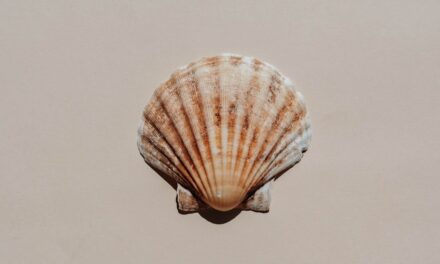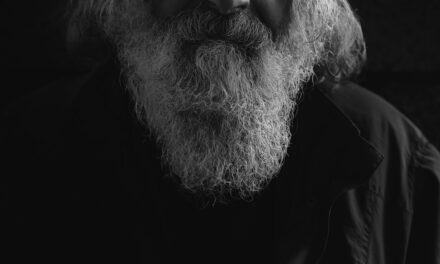Alexandre-François Desportes was born in 1661 in the vibrant city of Paris, a place that would later become a significant backdrop for his artistic journey. Growing up in a milieu rich with culture and artistic expression, Desportes was exposed to the works of prominent artists and the burgeoning art scene of the time. His early life was marked by a keen interest in nature and animals, which would later become central themes in his oeuvre.
The son of a painter, he was likely influenced by his father’s artistic pursuits, which may have ignited his passion for painting from a young age. Desportes’ formal education in the arts began when he became an apprentice to the renowned painter, Charles Le Brun. Le Brun was a pivotal figure in the French art world, known for his role as the chief painter to King Louis XIV and for his contributions to the development of the French Baroque style.
Under Le Brun’s tutelage, Desportes honed his skills in composition, colour theory, and the intricate techniques required for painting. This foundational training not only equipped him with technical prowess but also instilled in him an appreciation for the grandeur and elegance that characterised the art of his time.
Summary
- Desportes was born in Champigneulle, France, and received his early artistic training in Paris.
- Desportes’ artistic style was influenced by the Dutch and Flemish still-life painters, as well as the French Baroque tradition.
- Desportes became a court painter to King Louis XIV and later to King Louis XV, creating portraits and still-life paintings for the royal family.
- The French Rococo style, with its emphasis on lightness, elegance, and natural motifs, had a significant impact on Desportes’ art.
- Desportes had a deep love for nature and is best known for his exquisite animal paintings, capturing the beauty and character of various creatures.
Introduction to Alexandre-François Desportes’ Artistic Style
Desportes is often celebrated for his unique artistic style that seamlessly blends realism with a touch of idealism. His works are characterised by their meticulous attention to detail, particularly in the depiction of animals and natural settings. Unlike many of his contemporaries who focused on grand historical or mythological themes, Desportes found beauty in the simplicity of everyday life, capturing the essence of nature with remarkable precision.
His ability to portray animals with such lifelike quality set him apart from other artists of the period, earning him a reputation as one of the foremost animal painters of his time. The artist’s style is also marked by a vibrant colour palette that brings his subjects to life. Desportes employed a technique that involved layering colours to create depth and luminosity, allowing light to play across the surfaces of his paintings.
This approach not only enhanced the realism of his animal subjects but also imbued them with a sense of vitality and movement. His compositions often feature lush landscapes that serve as a backdrop to his animal subjects, further emphasising his love for nature and the harmonious relationship between wildlife and its environment.
Desportes’ Work as a Court Painter
Desportes’ career took a significant turn when he was appointed as a court painter to King Louis
This prestigious position allowed him to gain access to the royal court and its influential circles, providing him with opportunities to showcase his work to an elite audience. As a court painter, Desportes was tasked with creating artworks that not only celebrated the grandeur of the monarchy but also reflected the tastes and preferences of the royal family. His ability to adapt his style to suit the demands of courtly patrons demonstrated his versatility as an artist.
During his time at court, Desportes produced numerous works that depicted hunting scenes, a popular theme among the nobility. These paintings often featured majestic animals such as hounds, deer, and birds, set against idyllic landscapes that conveyed a sense of leisure and opulence. His works were not merely decorative; they served as symbols of power and prestige for their owners.
The artist’s keen understanding of the desires of his patrons allowed him to create pieces that resonated deeply with the values and aspirations of the French aristocracy.
Influence of the French Rococo Style on Desportes’ Art
The French Rococo style, which emerged in the early 18th century, had a profound impact on Desportes’ artistic development. Characterised by its ornate details, playful themes, and emphasis on lightness and grace, Rococo art provided a new lens through which Desportes could explore his subjects. While he maintained a strong foundation in realism, elements of Rococo aesthetics began to permeate his work, particularly in terms of composition and colour.
Desportes embraced the Rococo penchant for elaborate ornamentation and fluid forms, incorporating these elements into his animal paintings. His compositions often featured intricate floral arrangements and delicate foliage that enhanced the overall elegance of the scene. The use of soft pastel colours typical of Rococo art also found its way into Desportes’ palette, lending a sense of whimsy and charm to his works.
This fusion of realism with Rococo sensibilities allowed him to create pieces that were not only visually stunning but also emotionally resonant.
Desportes’ Love for Nature and His Animal Paintings
At the heart of Desportes’ artistic vision lies an unwavering love for nature and its creatures. His animal paintings are celebrated for their lifelike representation and emotional depth, capturing not just the physical attributes of animals but also their spirit and character. Whether depicting a regal stag in mid-leap or a serene bird perched on a branch, Desportes infused each work with a sense of vitality that invites viewers to connect with the natural world.
The artist’s keen observation skills allowed him to portray animals with remarkable accuracy, showcasing their unique behaviours and habitats. He often painted animals in their natural settings, surrounded by lush vegetation or tranquil waters, creating a harmonious relationship between subject and environment. This focus on nature not only reflects Desportes’ personal affinity for wildlife but also serves as a reminder of humanity’s connection to the natural world—a theme that resonates deeply in contemporary discussions about conservation and environmental stewardship.
Desportes’ Success and Recognition in the Art World
Desportes’ talent did not go unnoticed; he quickly gained recognition within artistic circles and among collectors. His works were sought after by both nobility and art enthusiasts alike, leading to numerous commissions throughout his career. The artist’s ability to capture the essence of animals with such finesse made him a favourite among those who appreciated fine art, further solidifying his status as one of France’s leading painters.
His success was not merely confined to France; Desportes’ reputation extended beyond national borders as collectors from other European countries began to acquire his works. The artist’s participation in prestigious exhibitions further elevated his profile, allowing him to showcase his talent on an international stage. As a result, Desportes became an influential figure in the art world, inspiring future generations of artists who sought to emulate his mastery of animal painting.
Desportes’ Travels and Their Impact on His Art
Throughout his career, Desportes embarked on several travels that significantly influenced his artistic practice. These journeys allowed him to explore diverse landscapes and encounter various species of animals, enriching his understanding of nature’s beauty. His travels across France and beyond provided him with new perspectives that informed his compositions and subject matter.
One notable journey took him to Flanders, where he encountered different flora and fauna that would later appear in his works. The vibrant landscapes he observed during these travels inspired him to experiment with new techniques and colour palettes, further enhancing the richness of his paintings. This exposure to different environments not only broadened his artistic horizons but also deepened his appreciation for the intricacies of nature—a theme that remained central to his work throughout his life.
Legacy and Impact of Desportes’ Work on Future Artists
The legacy of Alexandre-François Desportes extends far beyond his lifetime; he left an indelible mark on the art world that continues to resonate today. His innovative approach to animal painting set a precedent for future artists who sought to capture the beauty of wildlife with similar sensitivity and realism. Desportes’ ability to blend technical skill with emotional depth inspired generations of painters who followed in his footsteps.
Artists such as Jean-Baptiste Oudry and François Boucher drew inspiration from Desportes’ work, incorporating elements of his style into their own practices. The emphasis on nature and animals became a defining characteristic for many artists in subsequent movements, including Romanticism and Realism. Furthermore, Desportes’ contributions to the genre of still life painting paved the way for future explorations into this area, influencing how artists approached composition and subject matter.
Desportes’ Techniques and Materials Used in His Paintings
Desportes employed a variety of techniques and materials that contributed to the distinctive quality of his paintings. He primarily worked with oil paints on canvas, allowing him to achieve rich textures and vibrant colours that brought his subjects to life. His mastery of glazing techniques enabled him to create depth and luminosity within his works, enhancing their overall visual impact.
In addition to traditional oil paints, Desportes often utilised natural pigments derived from minerals and plants, which added an organic quality to his colour palette. His meticulous layering process involved applying multiple thin coats of paint, allowing for subtle variations in tone that created a sense of realism. This attention to detail extended beyond colour; he also employed fine brushes for intricate detailing, particularly when rendering fur or feathers—elements that showcased his dedication to capturing nature’s beauty with precision.
Notable Works and Collections Featuring Desportes’ Art
Among Desportes’ most notable works are “The Hunting Dog” and “Still Life with Game,” both exemplifying his exceptional skill in portraying animals within their natural contexts. “The Hunting Dog” captures the essence of loyalty and companionship through its depiction of a poised hound amidst a lush landscape—a testament to Desportes’ ability to convey emotion through animal subjects. Meanwhile, “Still Life with Game” showcases an array of hunted animals arranged elegantly against a backdrop that highlights their textures and colours.
Today, many of Desportes’ works are housed in prestigious collections around the world, including The Louvre in Paris and The National Gallery in London. These institutions recognise the significance of his contributions to art history and continue to celebrate his legacy through exhibitions and scholarly research. The enduring appeal of Desportes’ work ensures that it remains an integral part of discussions surrounding animal painting and its evolution over time.
The Continuing Appreciation for Desportes’ Art in the Modern World
In contemporary times, Alexandre-François Desportes’ art continues to captivate audiences with its timeless beauty and emotional resonance. As society grapples with issues related to environmental conservation and animal welfare, Desportes’ work serves as a poignant reminder of humanity’s connection to nature. His ability to portray animals with empathy invites viewers to reflect on their own relationships with wildlife and the importance of preserving natural habitats.
Art enthusiasts today appreciate Desportes not only for his technical prowess but also for the way he elevates ordinary subjects into extraordinary works of art. Exhibitions featuring his paintings draw significant interest from both scholars and casual viewers alike, highlighting the relevance of his work in today’s cultural landscape. As we continue to explore our relationship with nature through art, Alexandre-François Desportes remains an enduring figure whose legacy inspires both admiration and reflection on our shared responsibility towards the environment.
If you are interested in exploring the world of art further, you may want to check out an article on hyperrealistic urban scenes. This article delves into the intricate details of capturing the essence of modern cityscapes, much like the meticulous approach taken by Alexandre-François Desportes in his animal paintings. By studying the techniques used in hyperrealistic art, you can gain a deeper appreciation for the skill and dedication required to create truly lifelike works of art.


